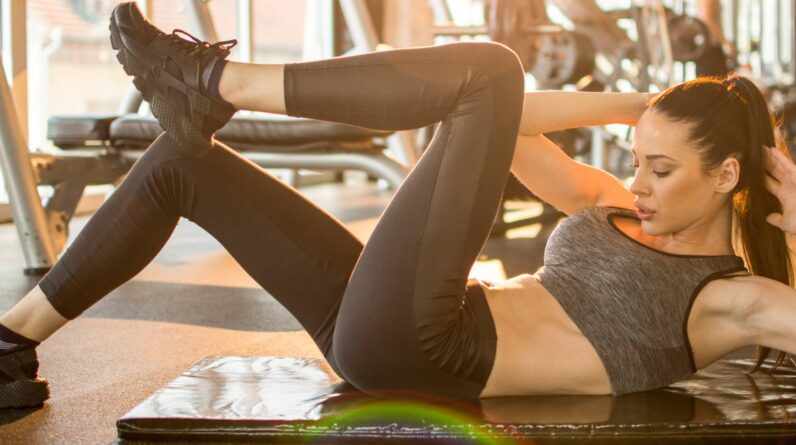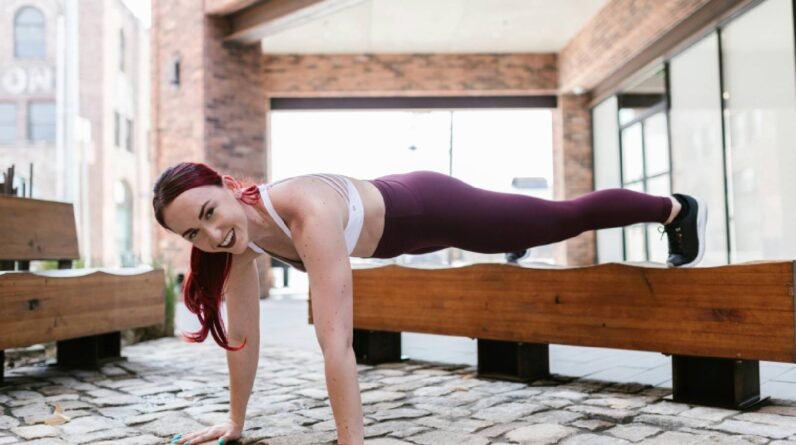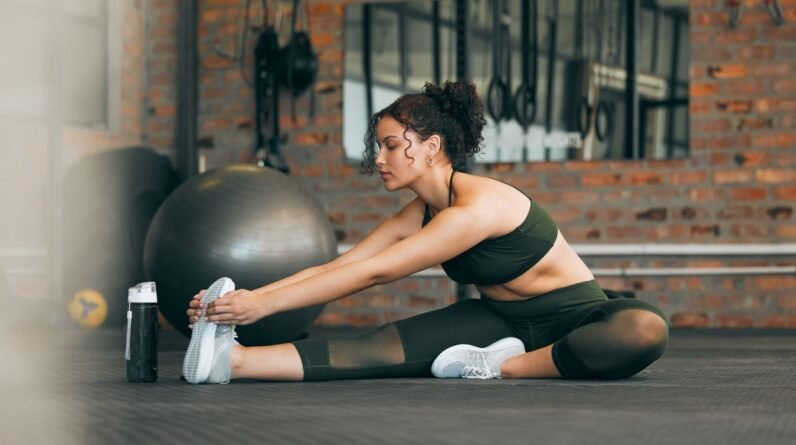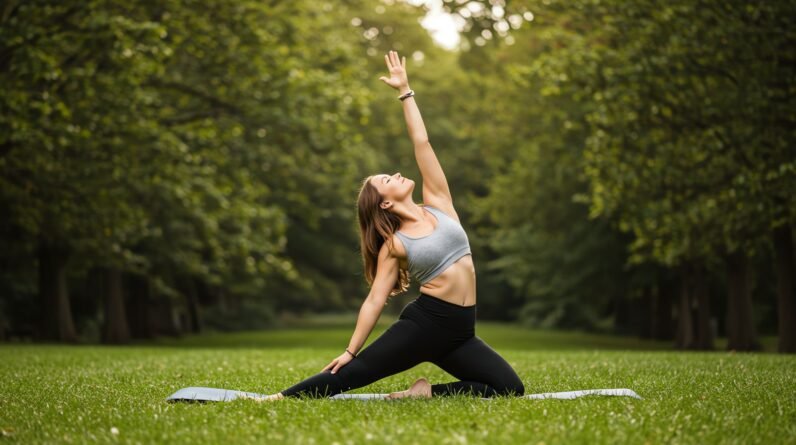
Reverse crunches can tone your core muscles. Here is a complete guide on how to do reverse crunches the right way, and their benefits.
Want to get rid of stubborn belly fat? Consider including reverse crunches into your fitness regimen. Reverse crunches are an excellent workout for strengthening your core, particularly the lower abdomen. They are a great alternative to regular crunches. When done correctly, they can help you achieve a toned and sculpted abdomen. While the exercise may look simple and minimalistic, there is a proper form and technique you should know about to maximise the benefits and avoid injuries. So, learn how to do reverse crunches at home.
What are reverse crunches?
“Reverse crunches are a type of abdominal exercise that primarily targets your lower abs. Unlike traditional crunches, where you bring your upper body towards your knees, reverse crunches involve bringing your knees towards your chest. This movement helps to strengthen and tone the lower portion of your core muscles,” says fitness expert Mahesh Ghanekar.

How to do reverse crunches?
Here is a step -by-step guide on how to do reverse crunches properly, as explained by the expert.
- Start by lying flat on your back with your knees bent and feet flat on the floor. Your hands can be placed behind your head or on your hips.
- Tighten your core muscles, especially your lower abs.
- Exhale and lift your hips off the ground, bringing your knees towards your chest.
- Pause at the top of the movement, squeezing your core muscles.
- Inhale and slowly lower your hips back to the starting position.
- Things to keep in mind!
- The main goal of reverse crunches is to target your lower abs. Concentrate on engaging these muscles throughout the exercise.
- Keep your head on the ground and avoid pulling on your neck.
- Inhale as you lower your hips and exhale as you lift them.
- If you are new to reverse crunches, start with a small number of repetitions and gradually increase as you get stronger.
- If you feel any pain, stop the exercise and consult a healthcare professional.
What are the benefits of reverse crunches?
Here are some potential benefits of reverse crunches:
You may also like


1. Builds a strong core
Reverse crunches are an effective exercise for strengthening your lower abdominals, which are often the most challenging part of your core to tone. When you perform a reverse crunch, you are primarily engaging the transverse abdominis (TVA) and the rectus abdominis, both of which are essential for a strong core, as found in a study published in the International Journal of Environmental Research and Public Health. The TVA is a deep abdominal muscle that wraps around your waist like a corset. It plays a crucial role in providing stability and support for your spine. When you perform reverse crunches, you contract the TVA to lift your hips off the ground, strengthening this important muscle. The rectus abdominis, often referred to as the six-pack muscle, runs vertically down the front of your abdomen. While traditional crunches primarily target the upper portion of the rectus abdominis, reverse crunches focus on the lower section. By engaging your core muscles to bring your knees towards your chest, you are strengthening both the upper and lower parts of the rectus abdominis.
2. Improves posture
A strong core is essential for maintaining good posture, and reverse crunches are the best way to strengthen your core muscles. Plus, a study published in the Journal of Physical Therapy Science found that doing core exercises helps to improve posture and can also help to reduce pain in the shoulders, middle back, and lower back. This is great for people who have to sit a lot, like students or people who work at a desk. When your core muscles are weak, your spine tends to slouch forward, leading to poor posture. Reverse crunches help to strengthen the muscles that support your spine, including the transverse abdominis and the rectus abdominis. As these muscles become stronger, they can help to hold your spine in a more upright and aligned position. This improved posture can reduce strain on your back and neck, and leads to improved posture.
3. Enhances balance and stability
According to a study published in the Journal of Physical Therapy Science, strengthening your core muscles can help you stay more balanced. Reverse crunches enhance balance and stability by strengthening the core muscles. The core, which includes the lower back, abs, and obliques, provides a strong foundation for the body. When these muscles are weak, it can lead to poor balance and increased risk of falls. Reverse crunches specifically target the lower abdominals, which are crucial for maintaining stability. By strengthening these muscles, reverse crunches improve the body’s ability to maintain balance and prevent falls, especially in activities that require coordination and agility.
4. Less stressful for your back
Traditional crunches involve bending your spine forward at a significant angle, which can put stress on your spinal discs. This stress can increase the risk of back pain and injuries. Reverse crunches, on the other hand, involve less spinal flexion. Instead of bringing your upper body towards your knees, you bring your knees towards your chest. This gentler movement reduces the strain on your spinal discs, making them a safer option for people with back issues or those who want to minimise the risk of injury. A study published in the Strength and Conditioning Journal showed that reducing the amount of forward flexion during abdominal exercises can significantly reduce the force on the spinal discs. This means that reverse crunches, with their less intense spinal flexion, are a more gentle and less stressful option for strengthening your core muscles.
5. Easier on neck
When performing traditional crunches, it is common for people to use their hands to pull their neck forward. This can put unnecessary strain on the neck muscles and increase the risk of neck pain. “Incorporating, reverse crunches minimises neck strain by keeping your head flat on the ground throughout the exercise. This prevents your neck from being pulled into a vulnerable position, reducing the risk of injury and discomfort. By choosing reverse crunches over traditional crunches, you can protect your neck while still effectively strengthening your core muscles,” explains the expert. This makes reverse crunches a safer and more comfortable option for many people, especially those with a history of neck pain.

What are the side effects of reverse crunches?
“Reverse crunches are generally considered a safe exercise, but like any physical activity, they can potentially cause discomfort or injury if not performed correctly,” says the expert. Here are some potential side effects:
- Back pain: If you have pre-existing back pain or perform reverse crunches with incorrect form, it can exacerbate your discomfort.
- Neck strain: If you pull on your neck during the exercise, you may experience neck strain or pain.
- Muscle soreness: It’s common to experience muscle soreness after doing any new exercise, including reverse crunches.
- Overtraining: If you do too many reverse crunches or perform them too frequently, you may risk overtraining, leading to fatigue, decreased performance, and even injury.






